Westies Hut
(with
chocolate
streams
and
marshmallows)
chocolate
streams
and
marshmallows)
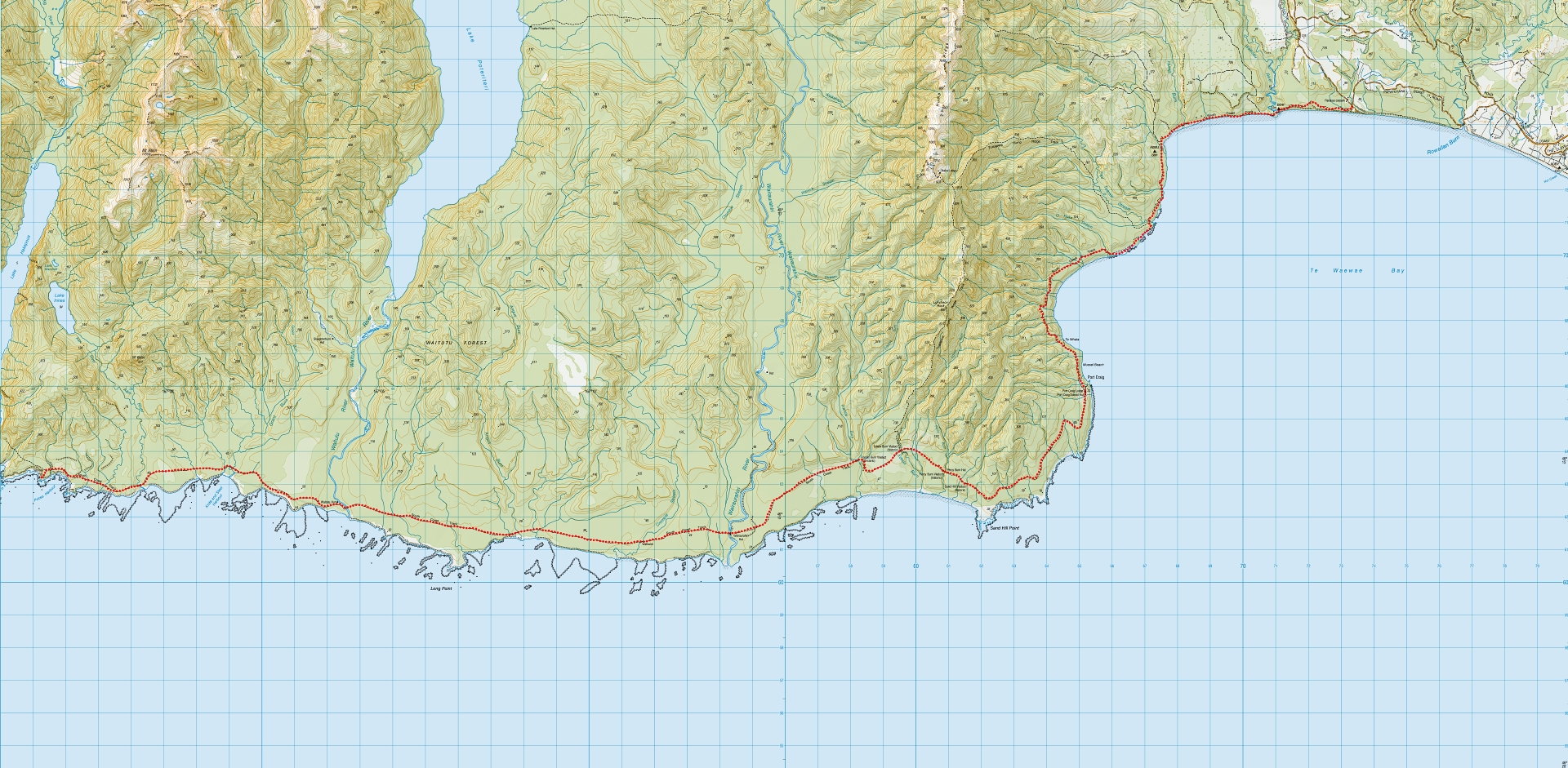
It started with Tony, Jamie and I jumping into a helicopter to fly to Westies Hut as a bit of a treat. We had decided to make it a bit more epic by flying in and then just walking out since the track was an out and back deal. The helicopter ride was amazing as was the landing at Westies Hut. It looked like we were flying straight at the rocky cliff before our helicopter touched down on the rugged South Coast beach.
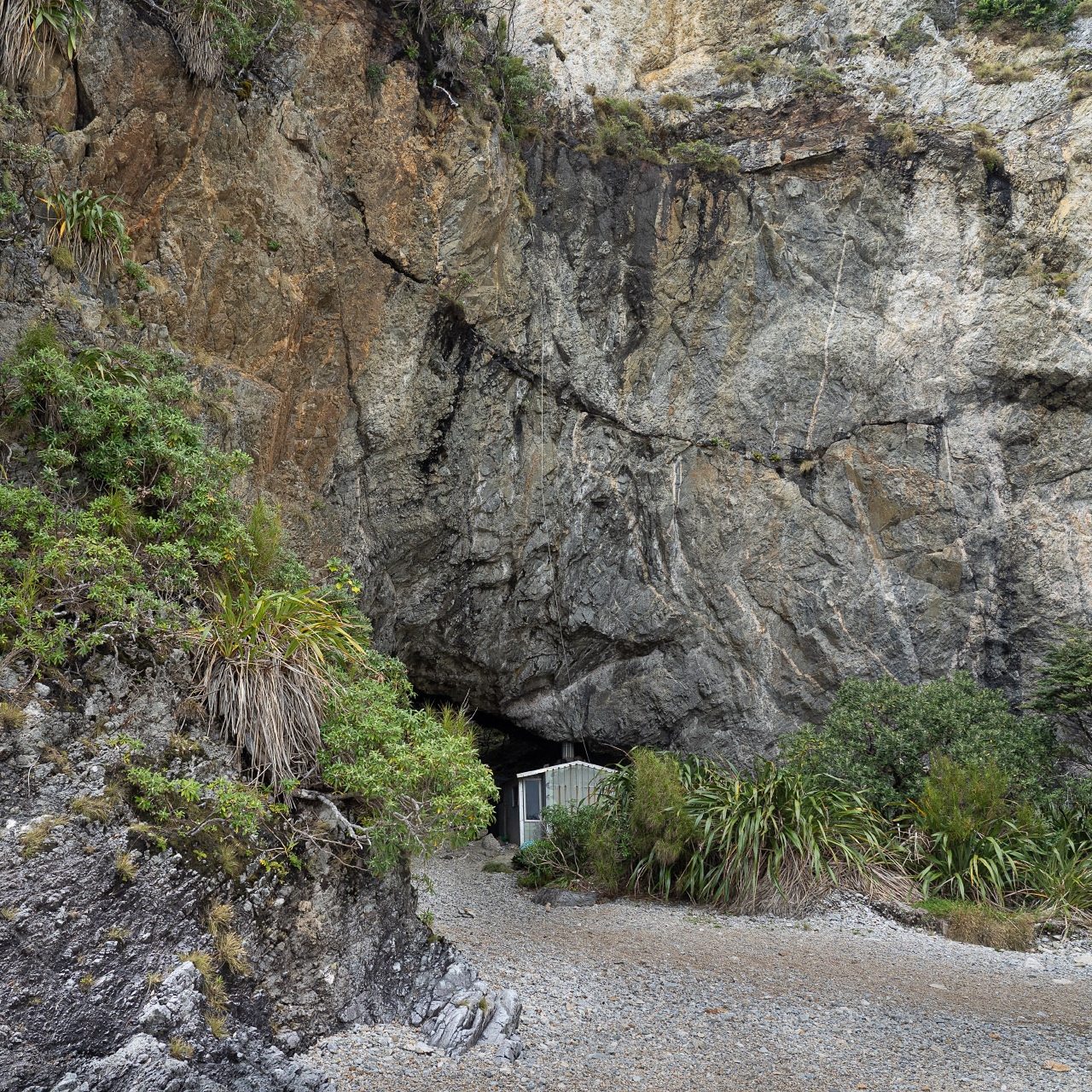
Westies Hut is in a spectacular location in Prices Harbour—it sits within a gigantic sea cave that is big enough to fit half a dozen buses inside—and you can hear the waves crashing on the beach as the hut is mere metres from the high tide mark. You also have a perfect view of a sunset framed by the entrance of the cave. It is the epitome of character and Fiordland wilderness. The hut comes complete with a pot-belly stove, and hot shower run through a boiler—it also might be the only fully wall-papered hut in NZ. The history of Westies Hut is just as colourful. The hut was originally started by fisherman ‘Slack’ Dawson as a shelter when he was hauling craypots before Owen (Westy) West took over residence for about 8 years and who continued the construction and built a second building (now the bunk room) so he didn’t have to share his space with visiting trampers all the time. The unfathomable part is how Westy ended up there. He literally jumped ship! After he got into an argument with the crew on a boat off Puysegur Point, he jumped overboard and swam through the wild seas to the South Coast. When he needed to get out from the hut, Westy would get a ride by hoisting up a banner with the word ‘TAXI’ onto his radio aerial atop the bluff above the cave as helicopter pilots would routinely divert over to look and drop down to pick him up if the banner was up. Care of the hut has been taken over by Cliff and Ann McDermott who saved it from demolition and are now the caretakers for it. The hut relies on donations for its continued maintenance.
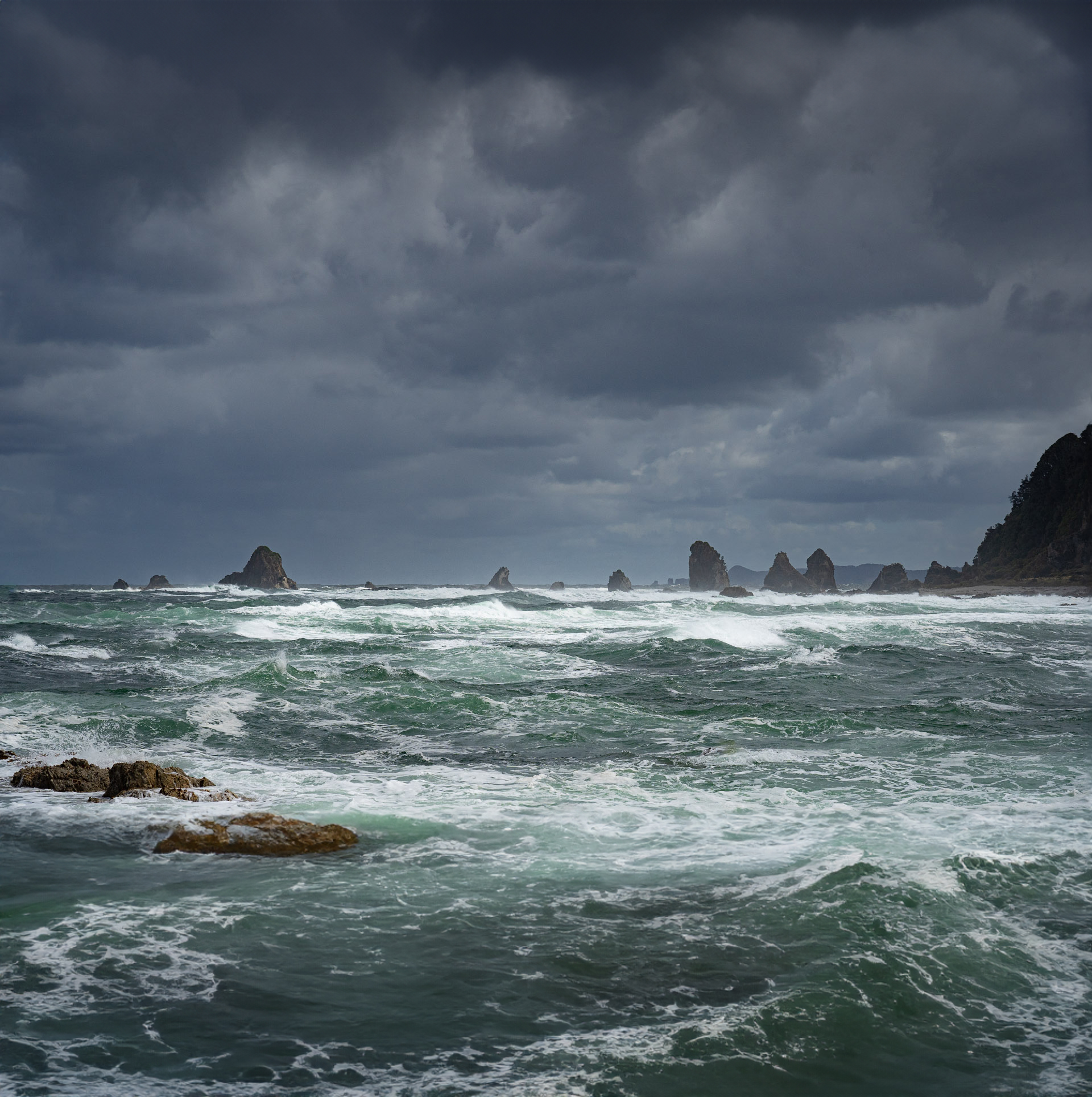
We settled in and then went for a walk down the beach that was occupied by several resident seals. We respectfully gave them plenty of space and had to closely watch where we were walking as they blended in well with the sand and rocks.
Jamie and I went for a walk over to Big River and when we came back, we found Tony had started a fire under the boiler set up in the cave that was connected to the shower. We could all now have a hot shower! I think we all had long showers as getting out into the cold air afterwards was a bit difficult.
That night we had burgers for mains and fresh fruit for dessert—a perk of flying and being able to take some luxuries that we normally wouldn’t carry. We had to carefully secure our food though as the hut was home to a few mice. Sunset that night was specially framed through the entrance of our cave. I teased Tony that we were now completely batty with spending the night in a cave as we had nicknamed ourselves Batman and Batwoman on a previous trip.
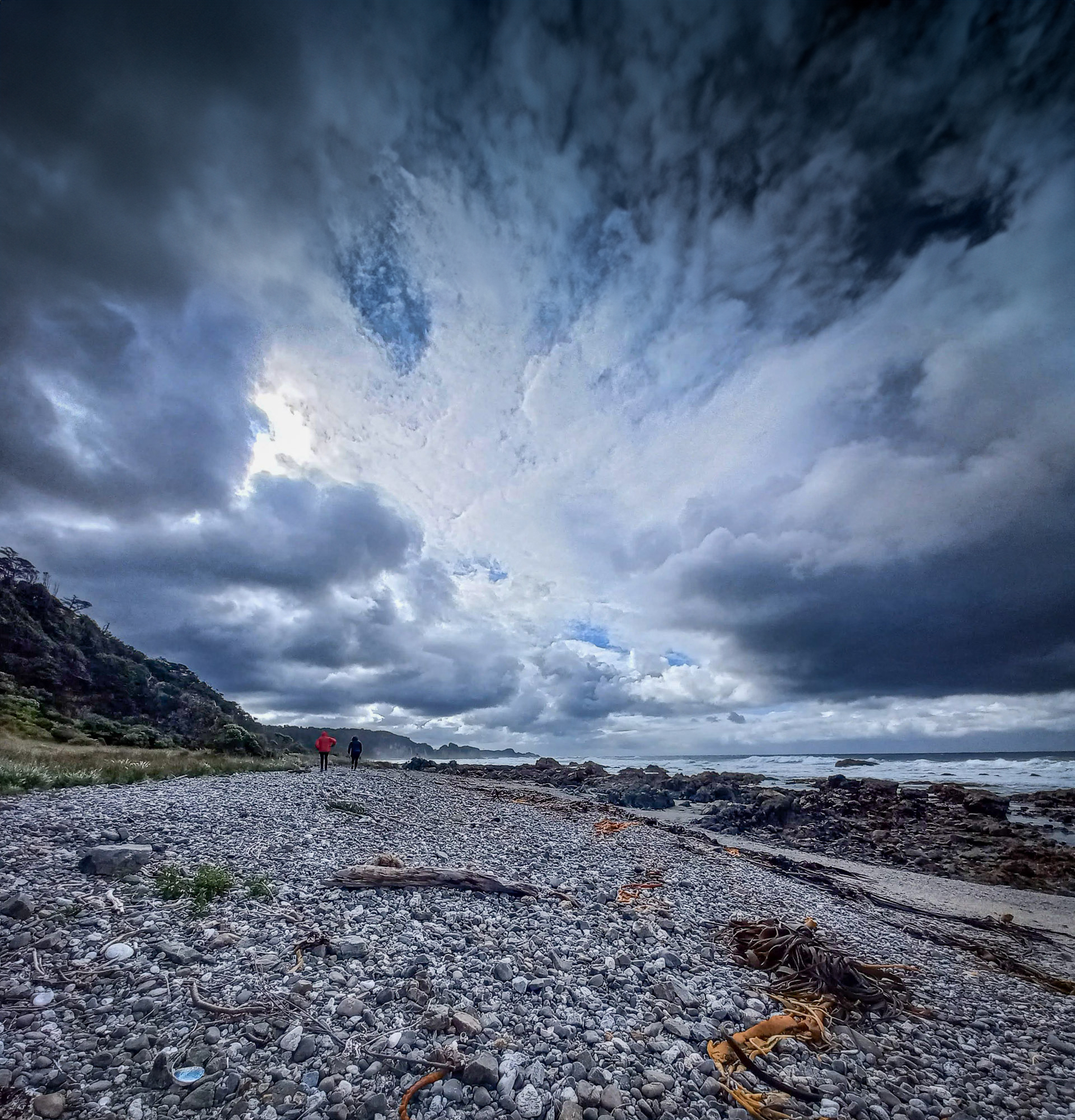
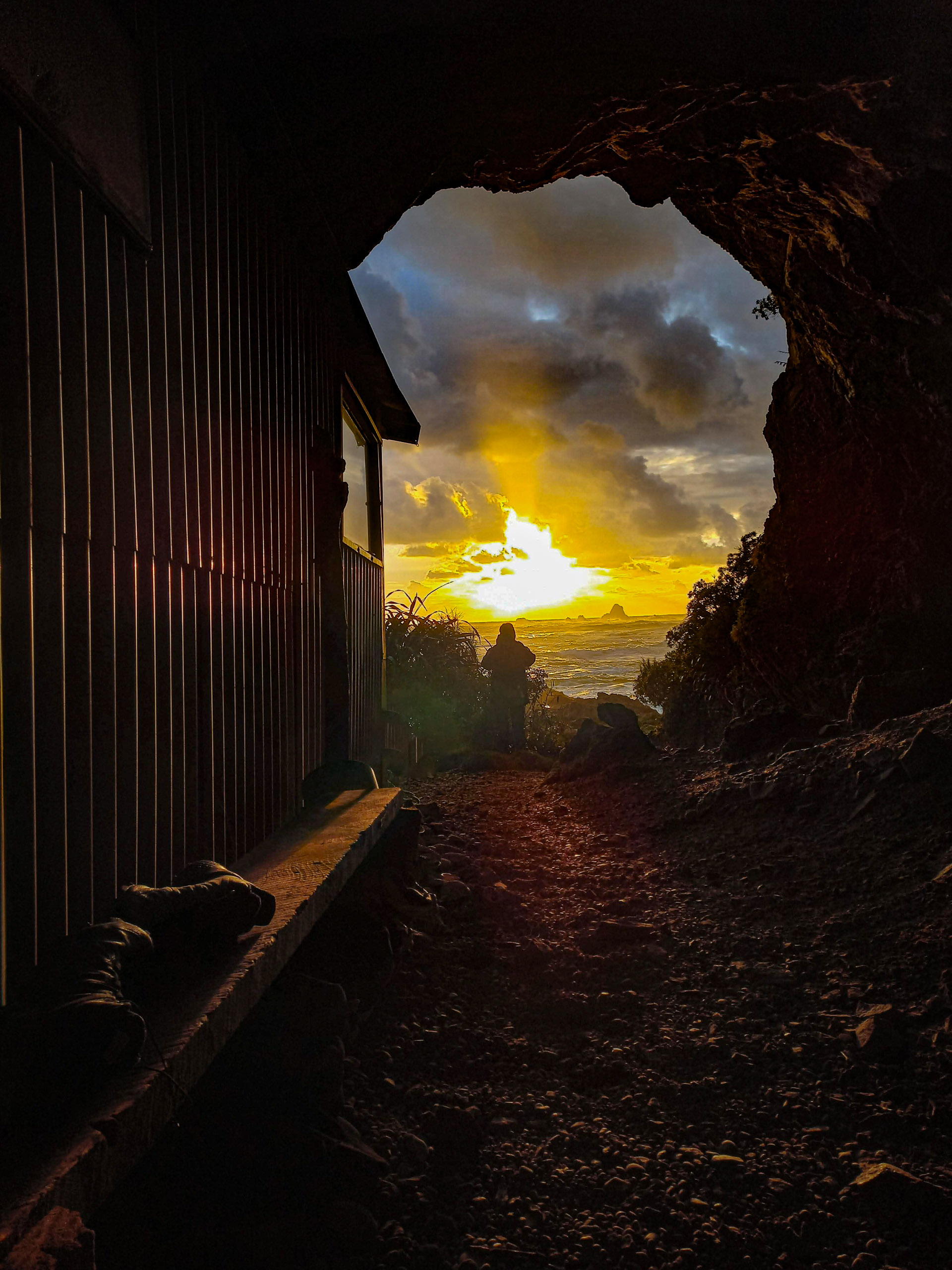
I think we all found it difficult to leave the hut the next morning as it is such a unique place. It was a bit of a steep climb up the hill—some ropes had been helpfully put in because it was a little exposed in some places but nothing dramatic if you stuck to the track. At the top of the climb we delved into podocarp forest. I enjoyed hearing the roar of the sea when the track got close to the beach again.
The DoC website had an alert about the Aan River—the bridge was not safe to cross when we were there and there was a detour in place. The last bit of this detour down to the beach was steep with a rope to assist the descent. I went abseiling down it with my pack on without thinking about it too much and then Jamie and Tony lowered their packs down on the rope towards me which was a bit easier than trying to manage going down with a fully loaded pack like I had done. The Aan River was easily crossable at the coast but I suspect after a lot of rain, it would be impassable (note that DoC are currently working on replacing the bridges along the track as at July 2023).
Back in the bush on the other side we started to get a bit of heavy rain that lasted an hour or so before it stopped. We heard some happy sounding kākā before we found a secret hut completely by accident when we lost the track for a while due to some tree fall.
After settling into Waitutu Hut for the night we went for a walk down to the beach—finding some lovely paua shells and a giant lobster shell.
The next morning we went across the bridge that had predator control doors on it to stop possums using the bridge. This means the Waitutu river can be used as a natural ‘predator fence.’ The Waitutu forest is an impressive podocarp forest and considered one of the least-altered podocarp forests in the world. You are walking amongst giants here—rimu, rata, kamahi, matai and kahikatea. We found a bit of a mud monster through here. When Tony had walked along the South Coast track over Christmas there hadn’t been much mud but there was certainly some now. I went in above my knees and nearly lost my shoe and faceplanted trying to dig myself out. The streams and waterfalls were all fascinating shades of brown through to dark red because of the tannin in them. I described some of them as like the Whitakers Berry & Biscuit chocolate colour I had in my pack. A number were topped off by a thick foam so Jamie and I referred to these ones as Chocolate streams with Marshmallows. We had fun splashing amongst all the foam in one of the creeks that had really accumulated a lot of our ‘marshmallows.’
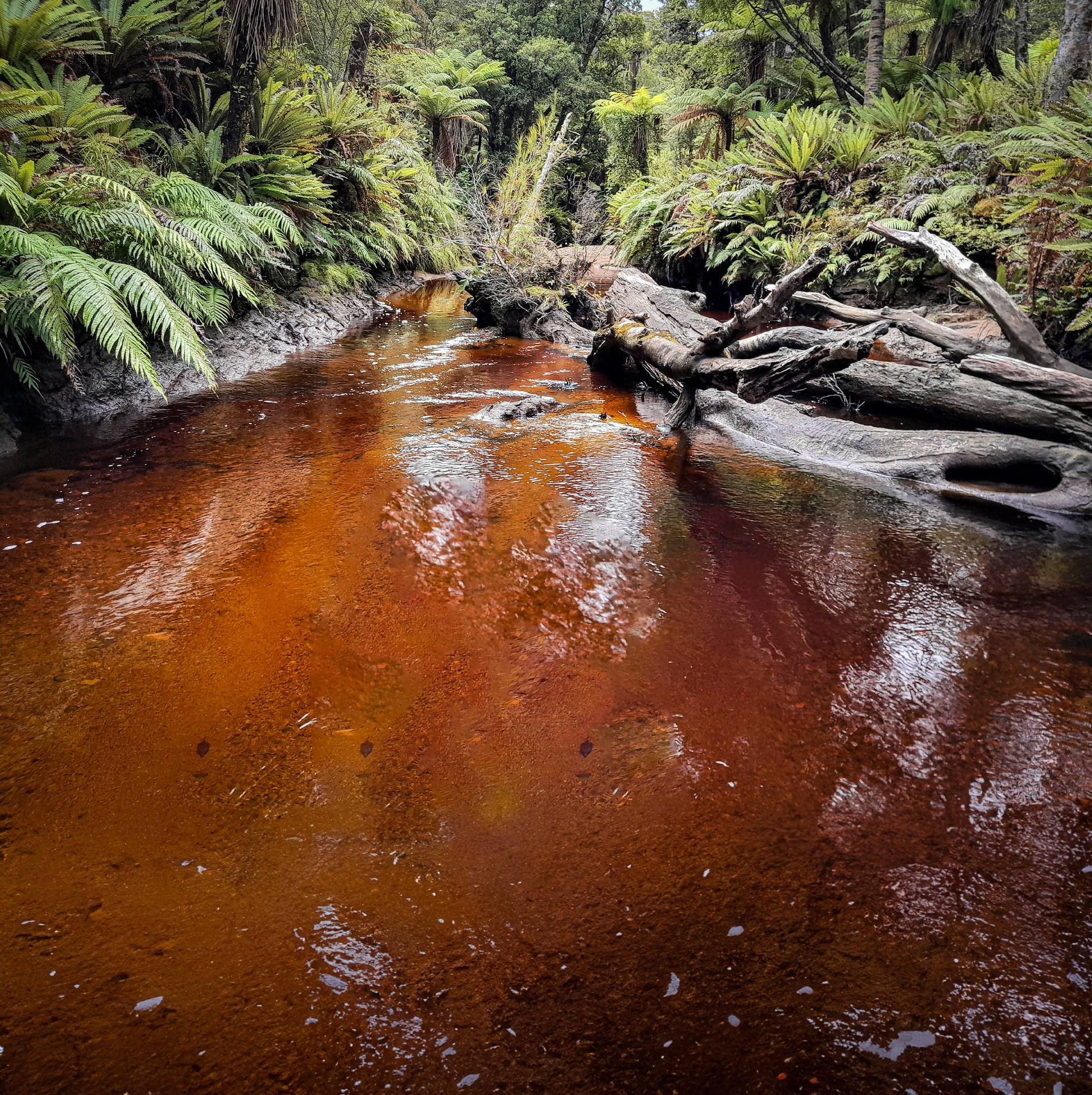
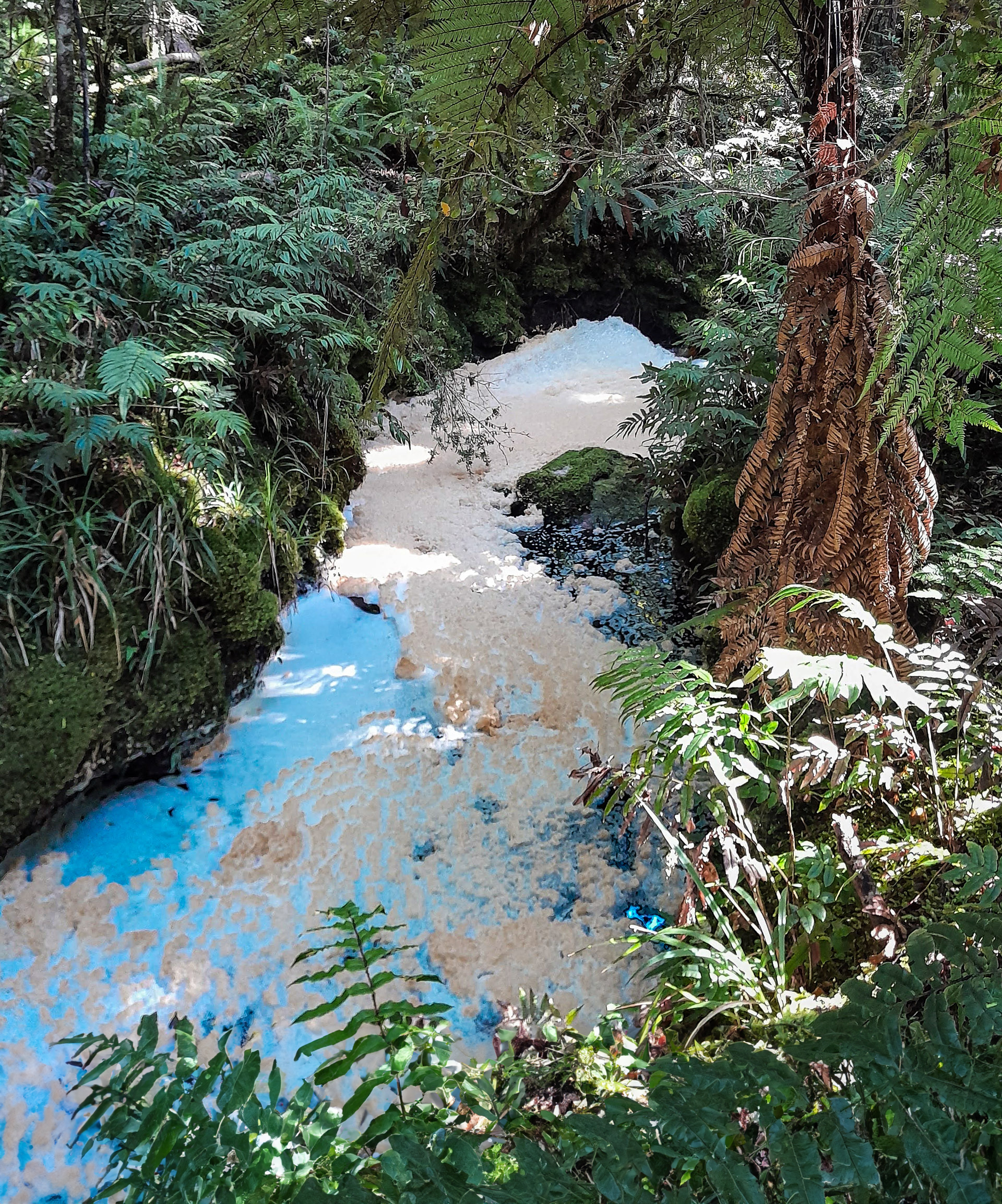
We made a spontaneous decision to treat ourselves a bit more and really glamp it by going to Waitutu Lodge rather than staying at Wairaurahiri Hut. The walk into the lodge had the native trees marked and Tony and Jamie got me tasting some spicy horopito before we all got a big fright when a toutouwai made a shrill noise like a fire alarm that caused us all to jump. The Lodge host, Alan, was very accommodating given we hadn’t booked and just turned up on his doorstep out of nowhere. Jess, his dog, was delighted with having us to play with. She took us for a walkie down to the beach where there was an old red telephone box among the sand dunes. The relevance of this phone box was that the South Coast track follows the old telegraph line to Puyseguer Point Lighthouse. This was the only communication with the outside world that the lighthouse had. The telegraph line is still sometimes visible along the track as is the occasional insulator on a tree.
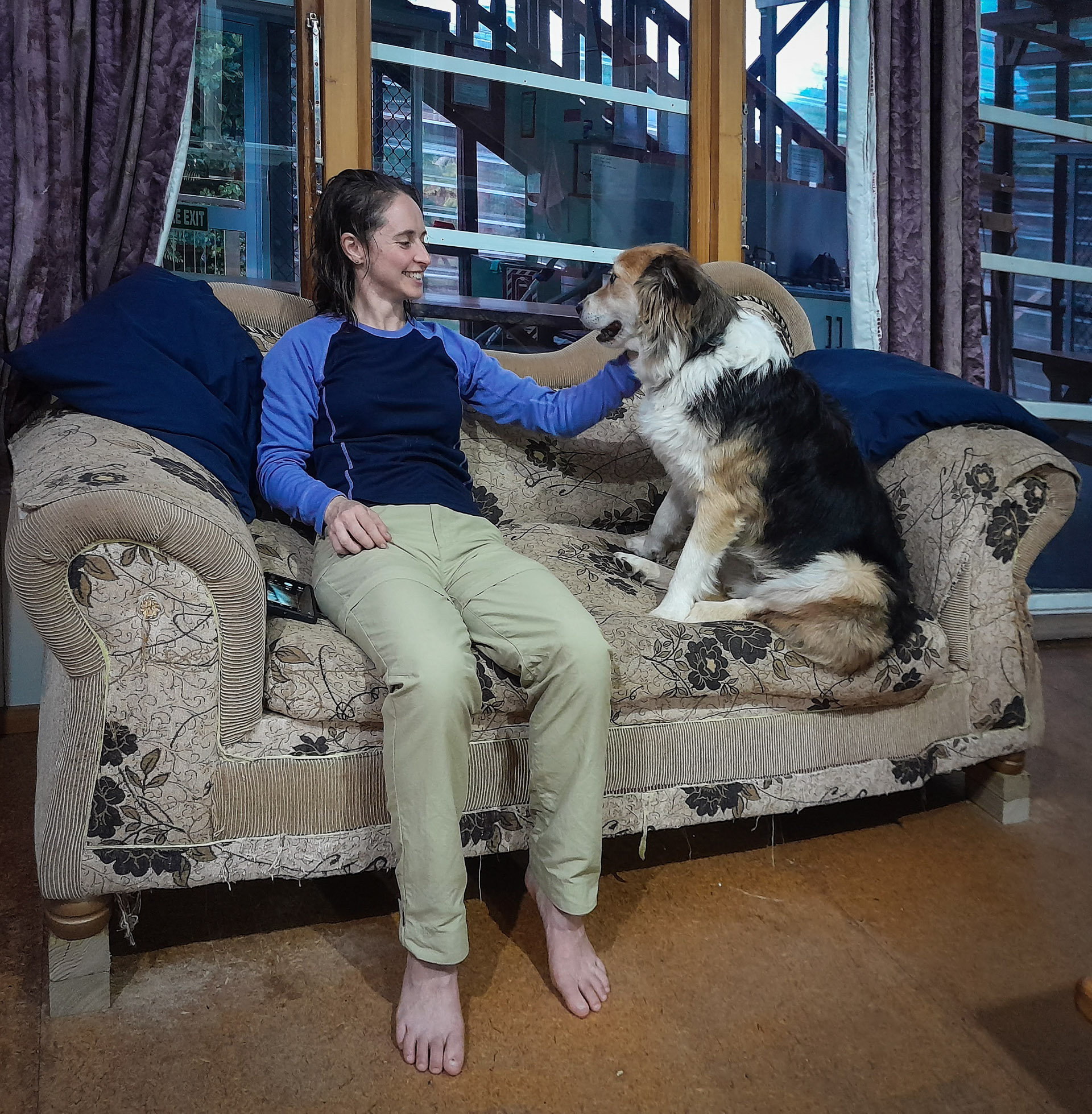
Tony had decided because he had already walked this section of the track twice that he would fly out instead of walking. Jamie and I checked the lodge’s weather stone before setting off (the stone was still there so there appeared to be no tornado) and we waved goodbye to Tony to make a start on our walk to Port Craig along the old logging tramlines, sometimes skirting around the edge of the tram line due to deep mud. The viaducts (Francis Burn, Edwin Burn, Percy Burn and Sand Hill) that we walked across were an impressive feat of engineering for the time they were built and even now are still very impressive. Percy Burn is the largest remaining timber viaduct in the world.
At Port Craig School House we decided that because there were a few people already there that we would go down to the beach and camp. On our way down we did the heritage tour with the interpretive panels at Port Craig and I found out that to get your own long drop as a woman, marriage was necessary!
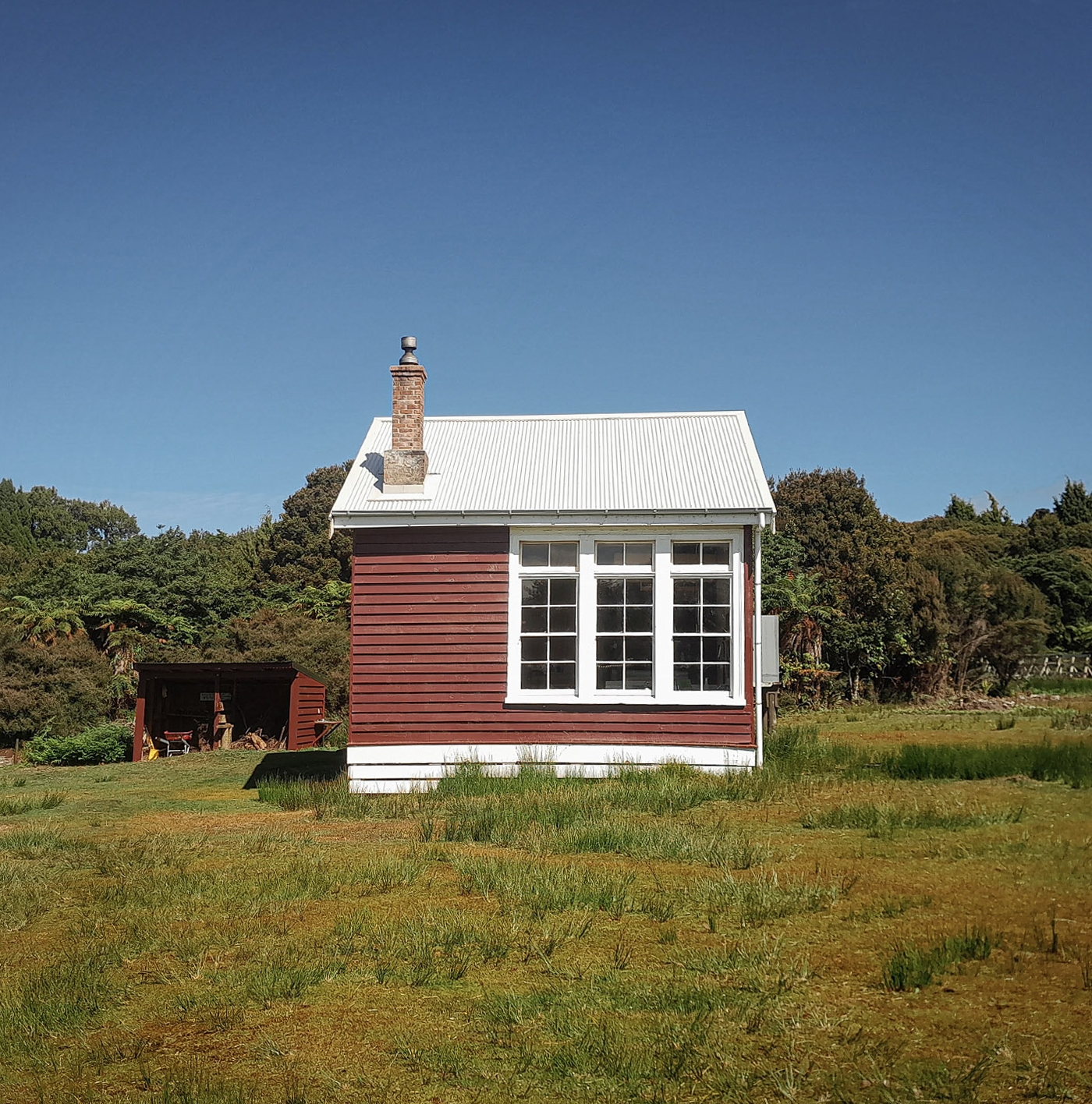
We found a place nestled back among the trees near the beach to camp. Not long after this I called out to Jamie that there were Hector’s Dolphins swimming in the bay. And then I said to Jamie that I had thought I had seen a penguin but I wasn’t too sure as it was a fair distance off. A few minutes later, there was a loud squawk and a Fiordland Crested Penguin, one of the rarest penguins in the world, waddled ashore for a while, before diving back into the sea and swimming around the bay hunting for food. This was one of the highlights of the trip for Jamie and I and incredibly special. It was fantastic to see one alive and happy as I had found the body of a dead Fiordland Crested on the beach near Westies Hut. The visit from the Fiordland Crested Penguin was worth tolerating the hordes of sandflies. Jamie and I were both very glad to be wearing mosquito headnets to ward them off.
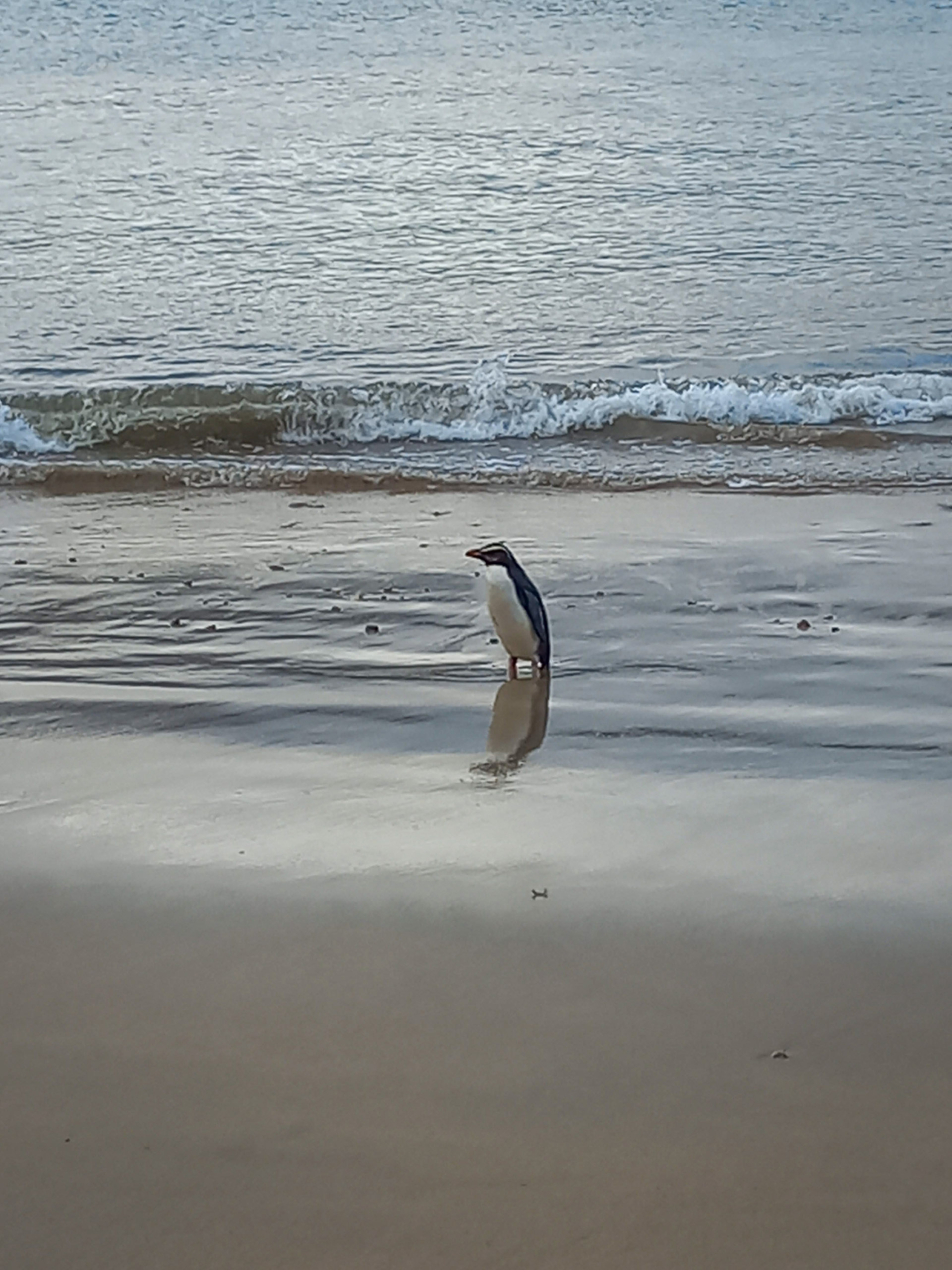
I woke up early the next morning to see the sunrise. Then it was an easy walk out from Port Craig with a fair bit of walking along lovely beaches on a hot Fiordland day. We sent off a message to Tony about what time to expect us and he said he had Molly waiting to meet us, which left Jamie and I wondering who Molly was. At Rarakau carpark we found out that Molly was a super cute springer spaniel that we had a fun time playing fetch with and seemed a fitting way to end our rather unusual tramp that had everything from helicopter rides, hot showers, caves, and a rare penguin, before we headed off for our next Fiordland adventure up Mt Titiroa (see here).
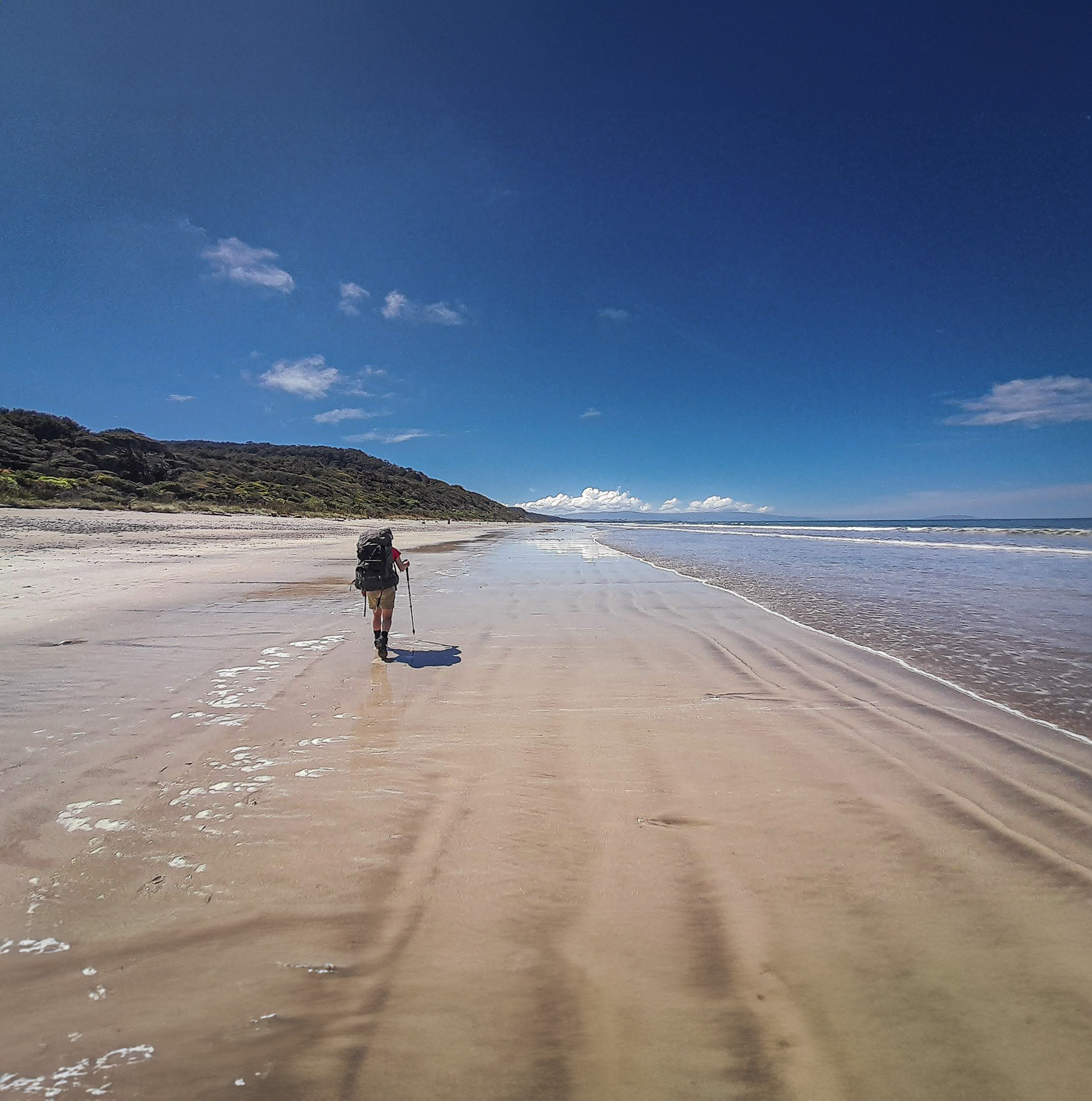
To take a 360 degrees view of the outside and inside of Westies Hut go to tararuaphotos.com then photospheres.


Thanks for posting this hoping to visit westies soon was there much in the way of pots and pans etc in the hut and are they in good nick?
or best to bring your own. Also are there any dive weights at the hut. Many thanks
Some utensils but recommend you take your own – no dive weights.
Take a look around the interior of the hut: